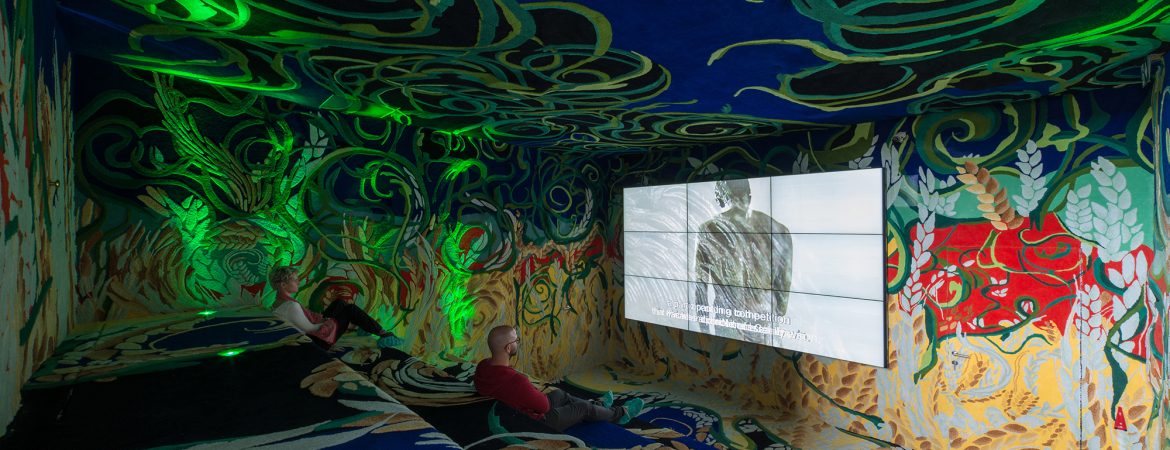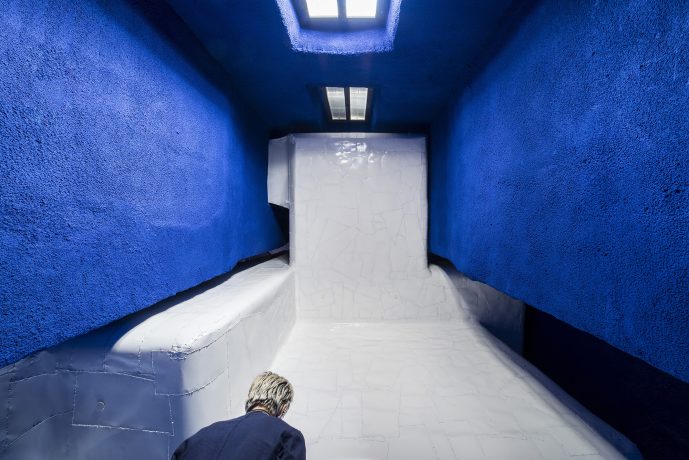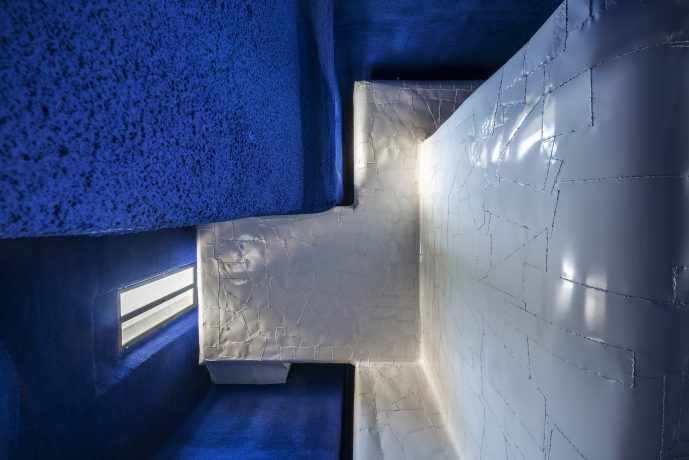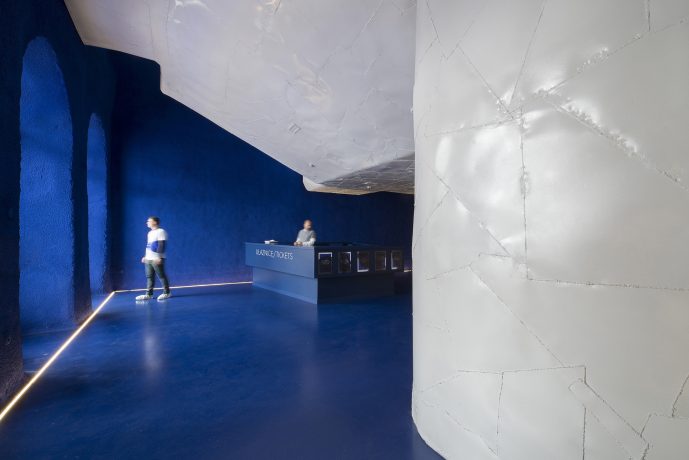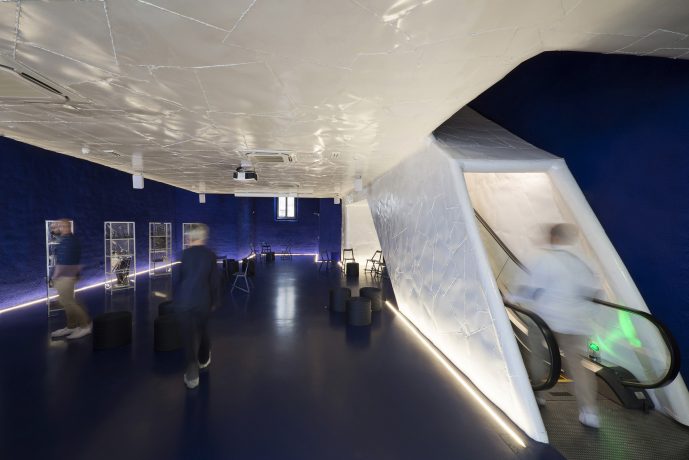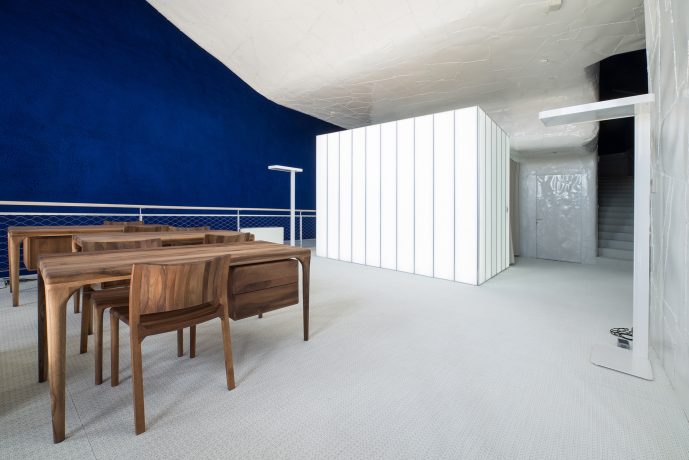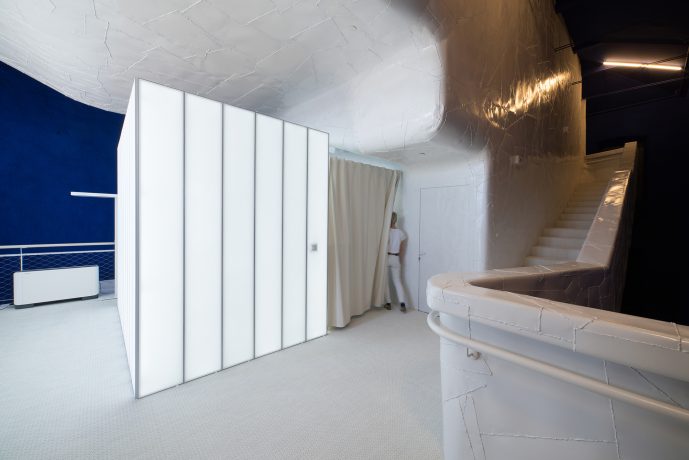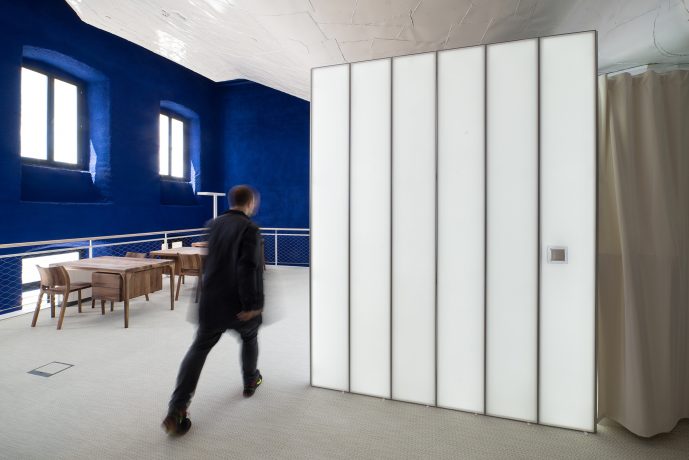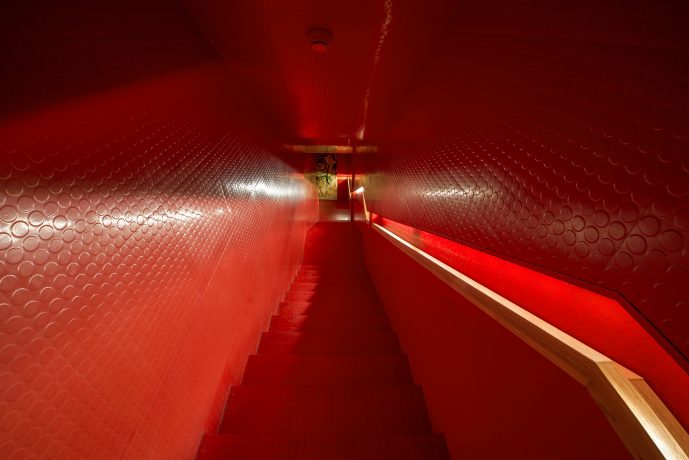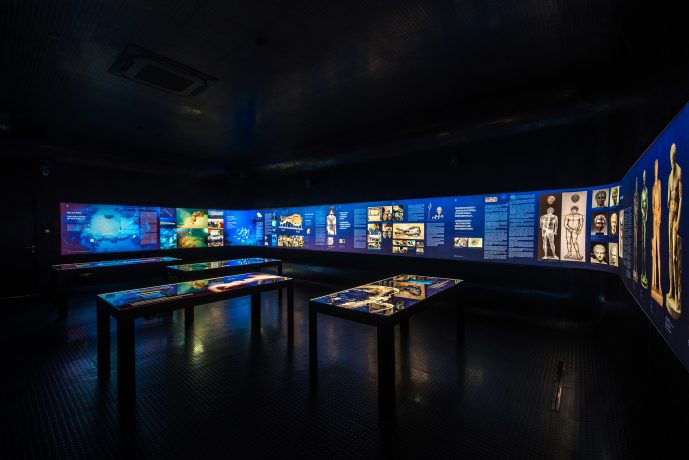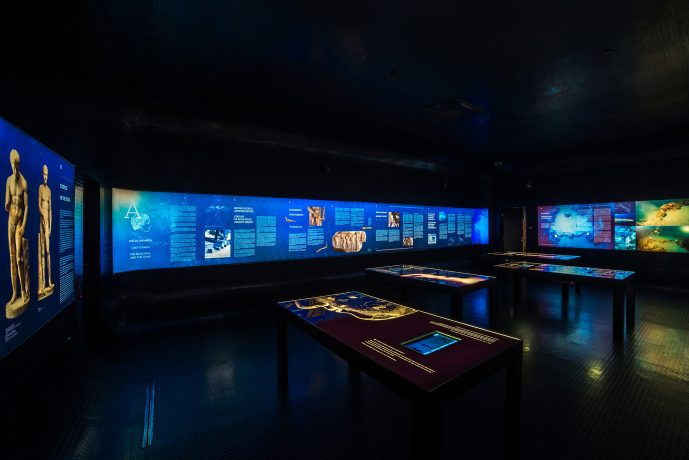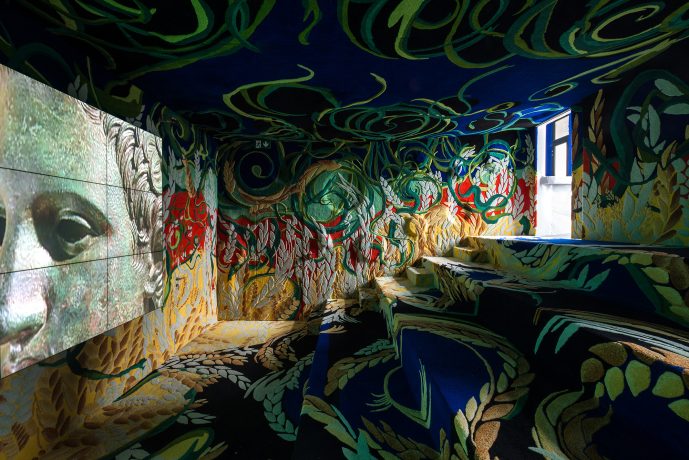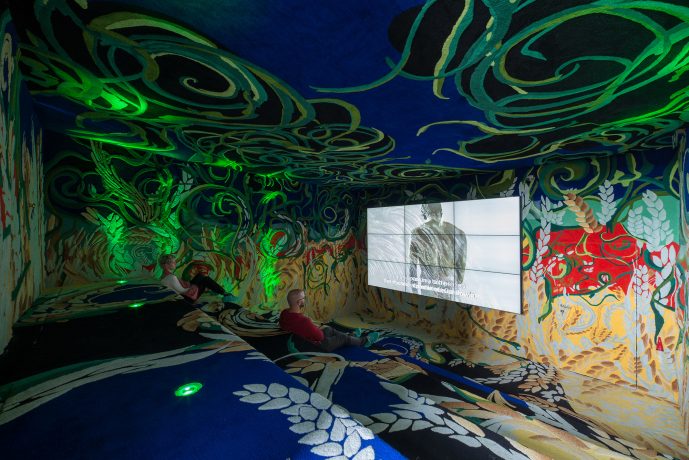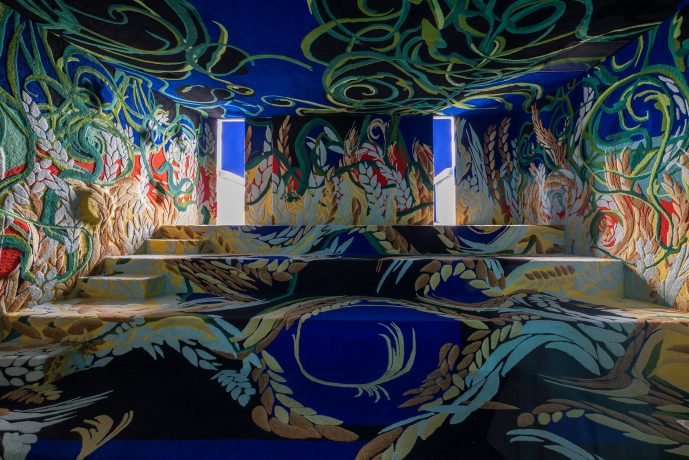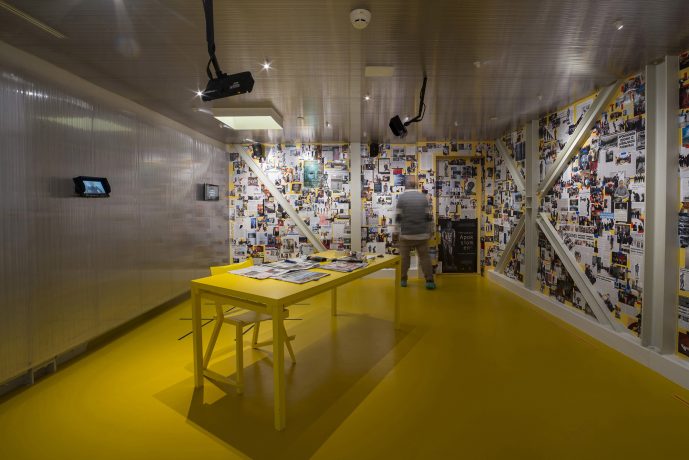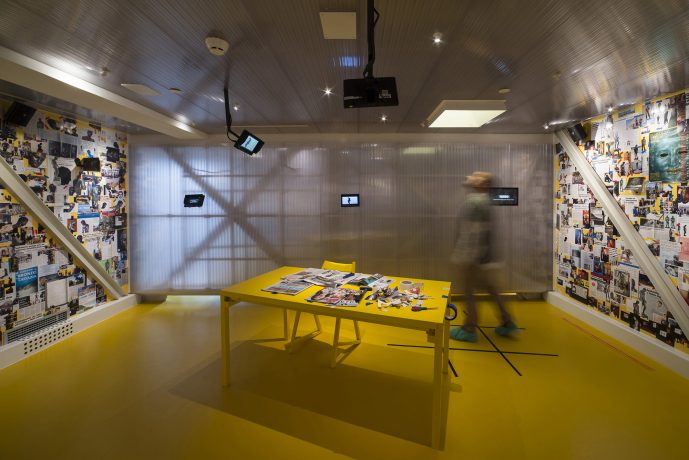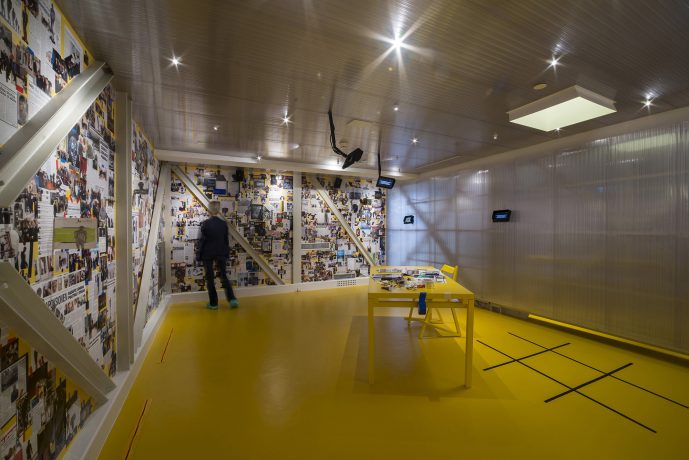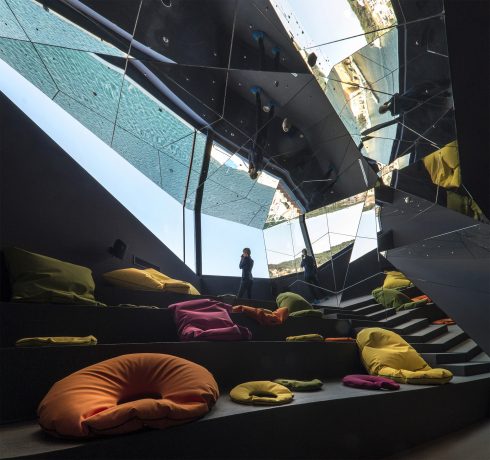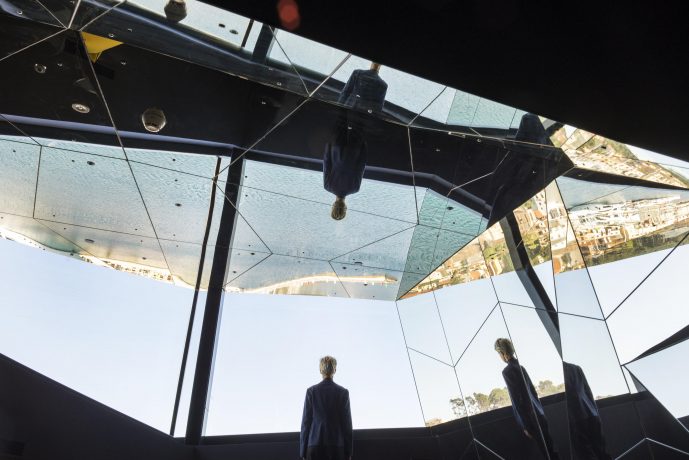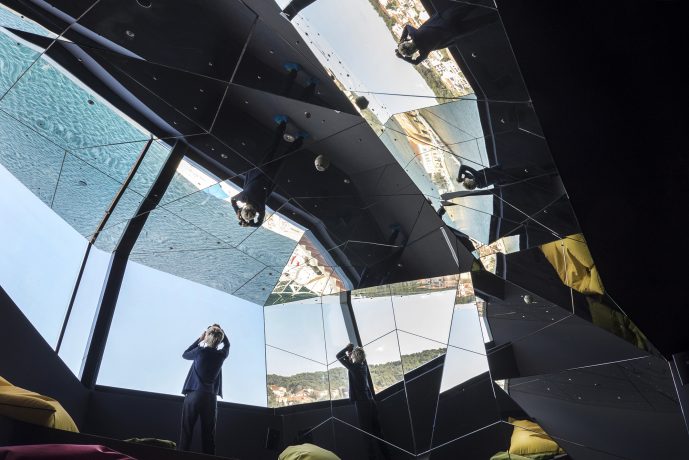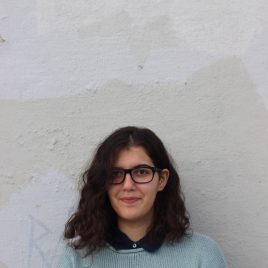Walking, seeing, reading and occasionally feeling are common activities in museums. The Museum of Apoxyomenos (Muzej Apoksiomena) in Croatian Lošinj is a museum that offers more and requires visitors to employ all of their senses in order to fully explore it. Smelling, listening and imagining add another layer to the visit, while the interior design shapes this unique museum experience.
Apoxyomenos is an Ancient Greek statue made from bronze during the second or the first century BC. Its name (literally means the “scraper”) shows an ancient custom of athletes. Before performing their activities, they used to cover their body with oil. After their exercises, they used to collect the oil, now mixed with sweat and dirt by scraping it off with a tool called strigil. That mixture was sold very expensively as an ointment that cured many infections.

The statue was found accidentally by a Belgian tourist while diving in the islet of Vele Orjule in 1996. Three years later it was raised from the bottom covered with marine organisms. It was restored without the usage of chemicals and only with hand tools.
After its restoration it was exhibited in the Archaeological Museum in Zagreb, in the Palazzo Medici Riccardi in Florence, in the J. Paul Getty Museum in Los Angeles, in the British Museum in London and the Louvre in Paris to name a few. In 2007, it was decided to move Apoxyomenos in the Lošinj Island where it was found and create a new museum dedicated just for the statue. It was decided to be hosted by the historic Kvarner Palace in Mali Lošinj.
The museum opened its doors to the public in 2016 and was designed by Saša Randić and Idis Turato to resemble ‘a house inside a house’. While the façade of the former palace was preserved, the interior was changed completely. Visitors are invited to learn about the statue and its story by employing all of their senses.


This museum has a specific route that allows the visitors to discover all the secrets of the Apoxyomenos. The story-telling was enhanced by the interior design. Each room provides an aspect of the story. Starting from the blue room of the entrance hall, the visitors are entering a black room where rubber is the dominant material. This exhibition hall features material about the history, the discovery and the restoration of the statue. The next room is a small amphitheater embellished with a hand woven carpet by Studio Kulenturato. Here, visitors can relax and imagine what being at the bottom of the sea feels like. The yellow room features newspaper cuts and internet headlines about the statue. The atmosphere is completed by the use of monitors. In order to get to the next room, visitors have to come through the olive passage, made from wood. The idea was inspired by the wood, leaves and twigs that where found inside the statue. A scent of olive and oil is quite memorable. Through the passage, visitors enter the white room where the statue stands alone in a clean white empty space. After reading about it and imagining its story, viewers are able to have a tet-a-tet with the statue without any distractions and experience it in full glory. Concluding the adventure, visitors are entering an amphitheater with mirrors that reflect the town of Mali Lošinj. This room shows the connection of the statue and the museum with the town.
We had the opportunity to talk to Idis Turato, author of the architecture of this museum and Marko Španjol, acting director of the Museum of Apoxyomenos.
What were the challenges of creating a museum with just one exhibit?
Idis Turato: The biggest challenge was to translate the whole story of Apoxyomenos into a distinct architecture and exhibition display, at the same time keeping in mind that the Museum – in any case - should not be just a house that holds one exhibit - but an entire ensemble of emotions and atmospheres that gather history, heritage, architecture, design and unique storytelling. That was the main focus, and a challenge, due to the fact that the sculpture itself is of great importance and value.


What can a museum with only one exhibit offer to visitors?
I.T.: Museum of Apoxyomenos should not be observed just as a house with one exhibit – but an unreal and unique experience of a one archaeological narrative and sensational story transported into architecture and design. Museum of Apoxyomenos represents the spatial materialization of the ceremony of passing through various rooms and passages on the way to the sculpture. The exhibition display is defined by the idea of passing through the building by visiting nine scenes and transition zones shaped by time and space, and accompanied by the corresponding audio background – which narrate the story of Apoxyomenos, his finding, context, restoration, importance… By visiting and experiencing those various, dynamic and colorful rooms, as well as by getting acquainted with their content, the visitors are getting ready for the final scene: "The White Room", a completely monochrome and silent room whose walls are covered in canvas, and whose only tenant is the bronze Apoxyomenos.
The museum of Apoxyomenos employs all the senses to present the story of the statue. How is this translated in its architectural design?
I.T.: The architecturally shaped body of the new Museum of Apoxyomenos has been inserted in a space defined by the exterior walls and the roof of the existing Kvarner Palace. Previous to architectural competition it was decided by conservators that the outer walls of the palace should stay intact, while there were no rules for the interior. This is why we decided to build a house within a house – a place that will capture you and lead you through the story, engaging all your senses. In the interior of the Museum the exhibition rooms are lined with different materials and linings producing a variety of tactile sensations, which results in different spatial and physical experiences of the Museum itself on the way from the entrance of the museum to the sculpture.
What was the risk of creating a museum where the building becomes the exhibit? Does the building overshadow the exhibit?
I.T.: It would be unfair towards the visitors to create a simple and non-contextual building where only Apoxyomenos would be shown. This is why, in terms of architecture and design, a unique and different building was meant to be built. The building does not overshadow exhibit, neither is the case vice-versa, because they are contextualized in coexistence and the effect of seeing the Apoxyomenos wouldn’t be as captive and peculiar as it is now with designed and thought-out guidance through the house. On the other hand, the building itself would not function neither make sense without Apoxyomenos – and this is why they are in need of each other, and do not function in a way that one could overshadow the exhibit. As the story of Apoxyomenos itself, as the brand of Lošinj, Kvarner and even Croatia – will easily get to the future guests, much easier and quicker than the story about its architecture – it often happens that visitors expect only to see Apoxyomenos and in the end get completely blown away with the house and ambience and design they did not expect.
Can the visualization of the narration help the visitors understand the story of the statue of Apoxyomenos?
I.T.: It is certain that the answer to this questions, as well as the question how to people see the museum – is very much diverse. Different kind of people with different interests, experiences and aesthetic come to see the Apoxyomenos and the Museum, and their understanding of the narration is very diverse and unique. But in general it is expected that the narration, carefully thought out and precisely arranged, will stir up the emotions and reactions in a way that the story of Apoxyomenos, from the beginning to the end, gets under your skin in the period of tour through the Museum, making you hear, feel and understand his context, importance and, most certainly, the beauty.
How do the visitors react to this museum?
Marko Španjol: Reactions of the visitors are ranging from the astonishment and overwhelming to the crying. Major part of the visitors has positive reactions and say that are surprised with the exhibition in the Museum of Apoxyomenos. Although, there is only one artefact in the Museum, the story of that artefact is rich and interesting, and is portrayed throughout the Museum. Visitors passes room by room and learn about the statue, and then finally in the white room, they have a chance to stay face to face with Apoxyomenos. White room is the heart of the Museum, and place that provokes emotions. Because of suspension along the way, contrast in the lighting in other parts of the Museum, white room truly stand out.


What would be the most unique feature of the museum besides the statue?
M.Š.: Except white room, and Apoxyomenos itself, there is plenty to see and experience in the Museum. Main idea behind the permanent exhibition is atmosphere that is built by different sounds in every room, special lighting, and materials that visitors can touch and feel. Even the temperature has a role in making of that special feel. For example; so called black room try to recreate atmosphere of the seabed where statue waited for 2000 years; so it is a bit colder than rest of the Museum, there are not sharp angles between floors and ceiling and it is also darker than the rest of the Museum. Next room is all covered in tapestry of sheep wool and visitors are supposed to sit on the steps and touch that tapestry. Every room offers unique feel so visiting Museum of Apoxyomenos is not just a regular visit and a chance to learn something more of the human history, but an experience for all senses.
How this museum connects with the community of Mali Lošinj?
M.Š.: Really important to stress out is the fact that Museum of Apoxyomenos have become part of the identity of island of Lošinj. Local people accepted Apoxyomenos and his Museum as their own, and as crown jewel of the Island. Community of Mali Lošinj recognized Museum as important part of the cultural scene but also really important in the tourism industry.


